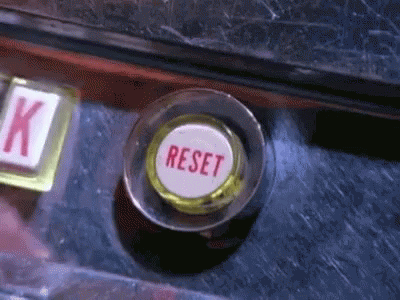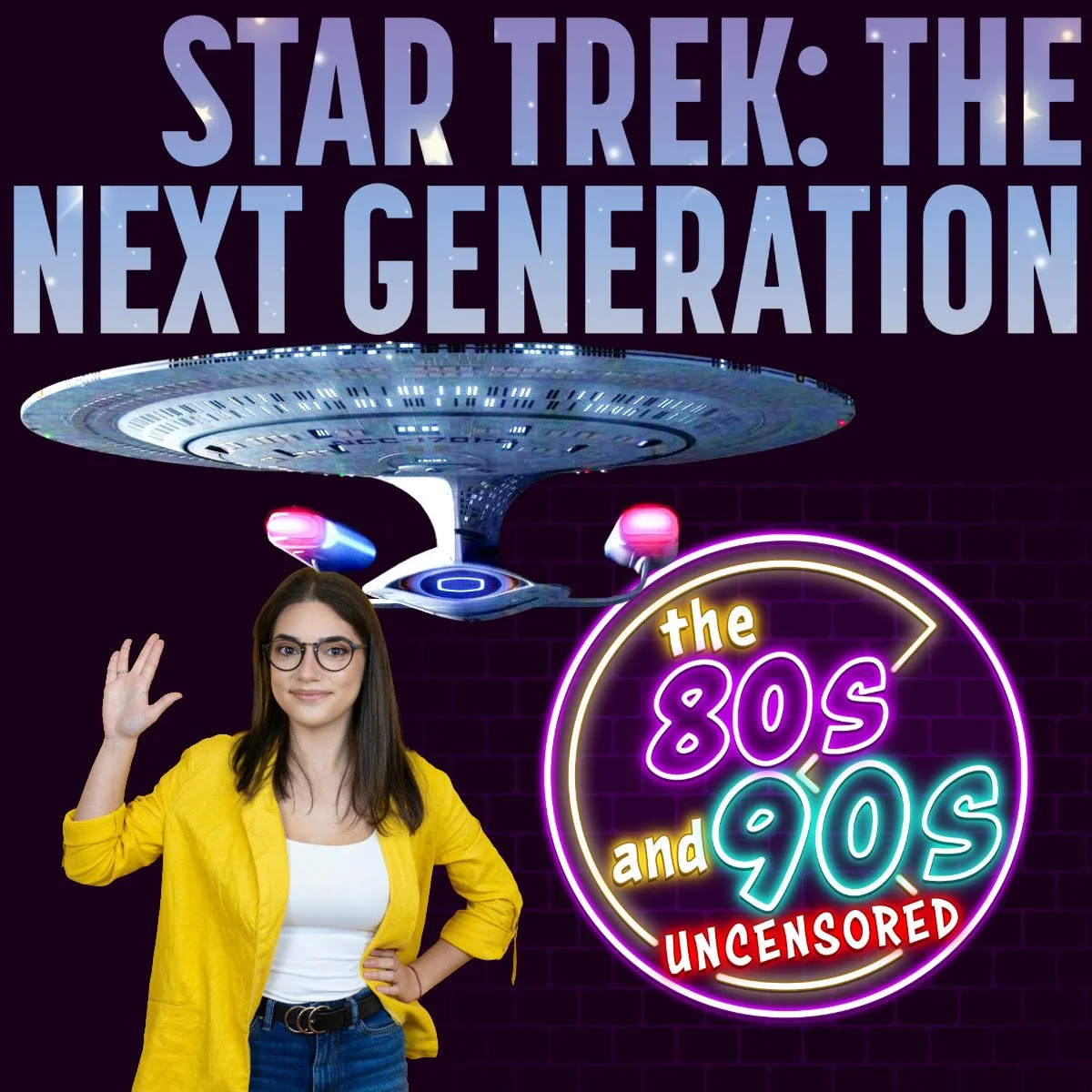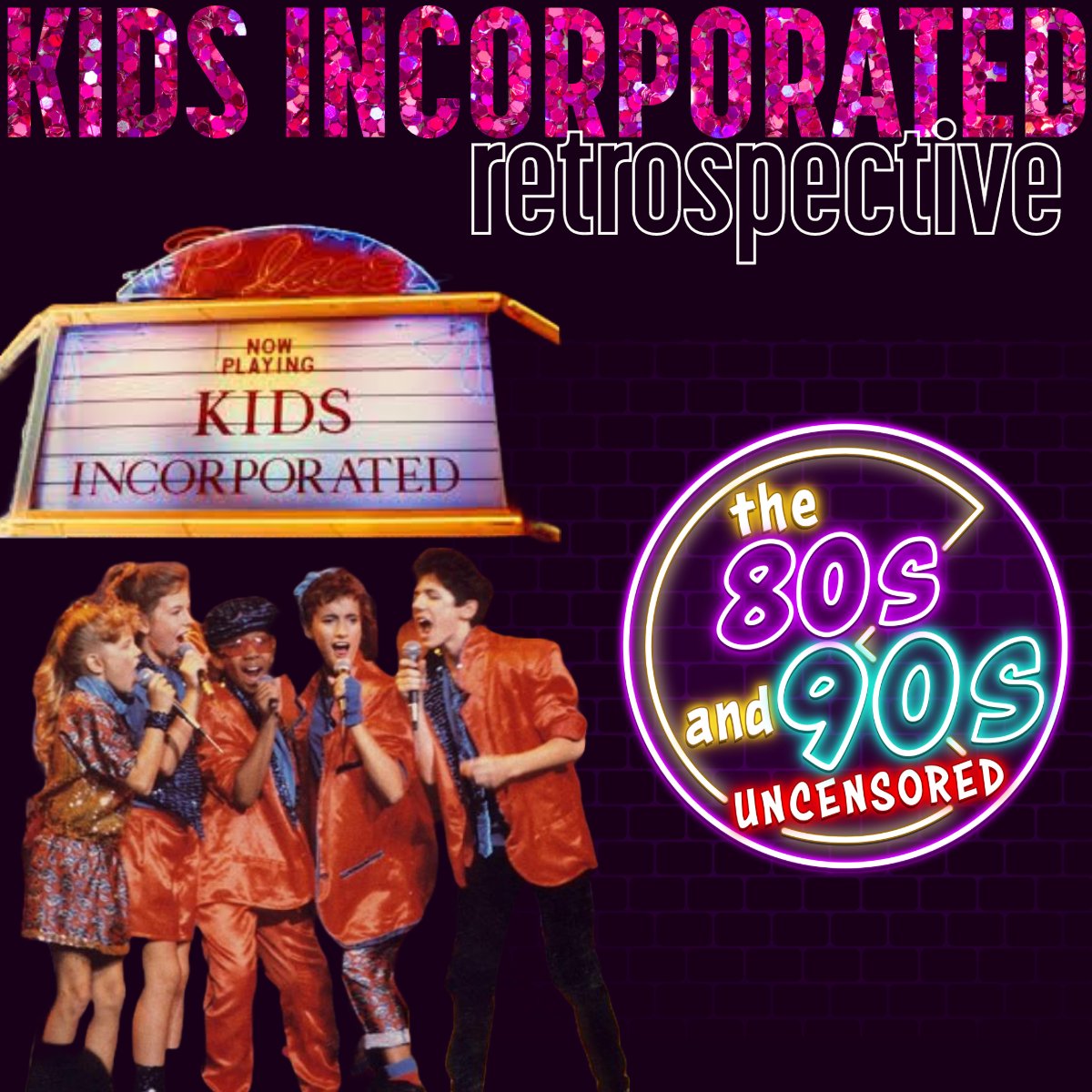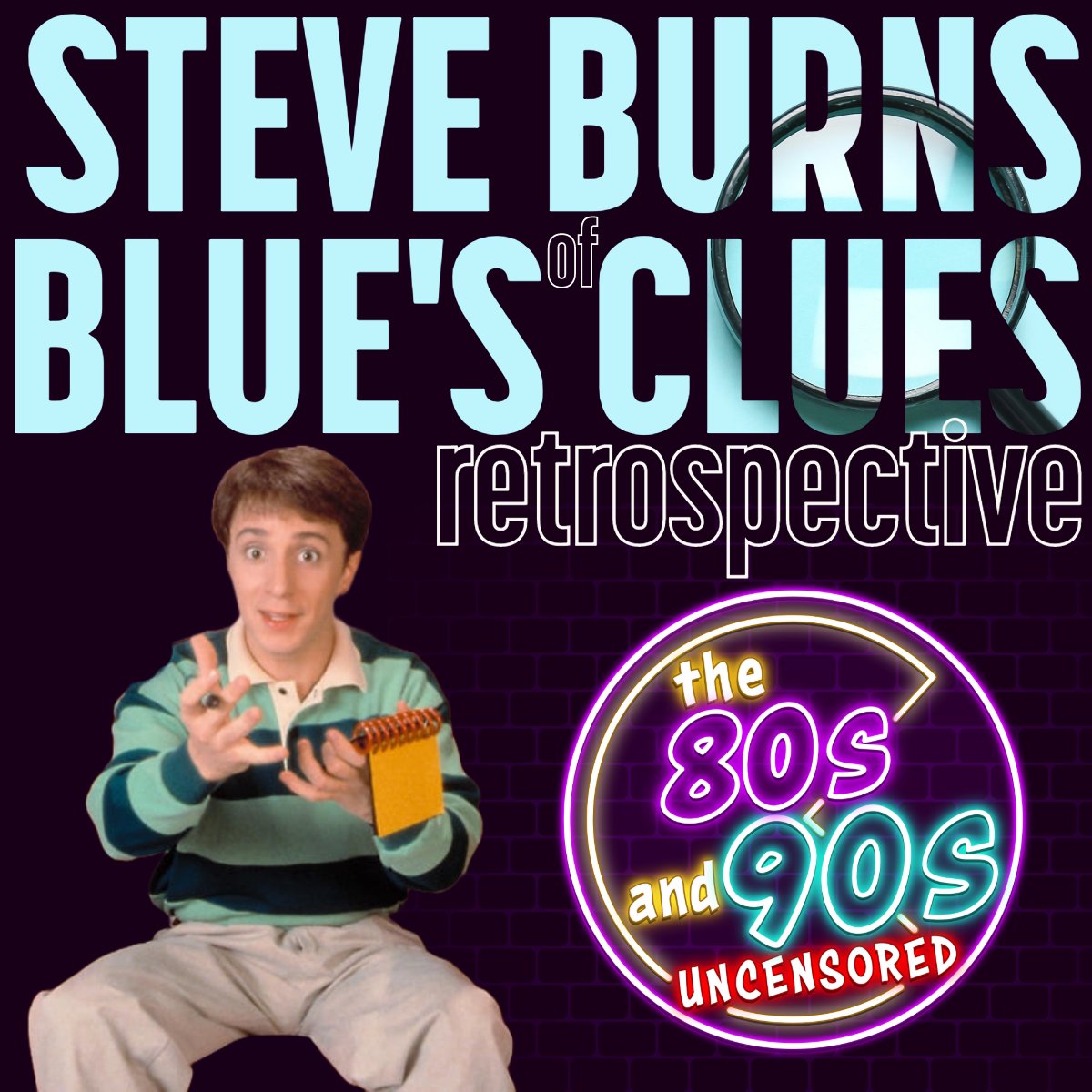Why Star Trek: Voyager Isn't All That Great
My co-host Milo Denison and I don’t always see eye-to-eye on The 80s and 90s Uncensored podcast, but through conversation and logical debate, we can usually find some middle ground…
…except when it comes to our Star Trek: DS9 vs. Voyager feud. On that front, things can get... ugly.
As I write this, Milo is releasing his retrospective on 1999, where he spends a suspiciously long time critiquing Deep Space Nine, likely because I wasn’t there to defend it. Well, Milo, you might produce the podcast, but I write the blogs, so its time for my written criticism of Star Trek: Voyager.
Start at 17:41 for Milo’s criticism of Star Trek: Deep Space Nine, prompting the very article you’re reading.
Ah, Star Trek: Voyager. The Trek show with a snazzy premise: a lost starship stranded 70,000 light-years from home, a crew divided between disciplined Starfleet officers and rebel Maquis, and no backup from Starfleet. Sounds like the setup for a gritty, high-stakes adventure, right? Unfortunately, many critics think Voyager took all that potential, dropped it, and then rolled it down a wormhole.
Here’s why they (and I) believe Voyager is the redshirt of the Star Trek franchise.
"We Had Such High Hopes!"
Voyager had the perfect setup for a tense, gritty survival story. Stranded in the unexplored Delta Quadrant, a ship low on supplies, and two factions (Starfleet and Maquis) forced to work together despite fundamentally opposing values. Instead of exploring the clash of ideologies, Voyager decided everyone would just become best friends by Episode 2. No drama, no power struggles. Just a lot of handshakes and “Let’s get along, everyone.”
As for being stranded far from Federation resources? The ship rarely showed signs of wear or scarcity. Running out of basic necessities like food, dilithium, or, heaven forbid, coffee? Nope. The ship always looked like it had just left space dock, gleaming and ready to go. Critics argue this made the whole “we’re alone out here” premise feel hollow.
The Crew: Are You Awake Back There?
Voyager had a few standout characters, but many of its crew members felt more like window dressing. Poor, poor Harry Kim. The clarinet-playing nerd spent seven seasons as an ensign, trapped in awkward love plots and the occasional alien abduction. Critics joke that his character arc peaked in Season 1 and then plateaued forever. Meanwhile, Tom Paris, the supposed renegade, rejoined Starfleet from prison as a lieutenant, got demoted to ensign for insubordination, and then somehow climbed back up to lieutenant again. Guess hard work and good behavior aren’t always the key to success. Sorry, Harry.
Then there was Chakotay, the Maquis leader who was supposed to bring fire and tension to the table. Instead, he ended up as a soft-spoken sidekick whose most notable trait was spouting vaguely spiritual advice. He didn’t clash with Janeway so much as nod along with her decisions like a supportive coworker.
Then there’s Tuvok—because apparently, Star Trek couldn’t resist adding another emotionless Vulcan to the mix. And B’Elanna Torres? Sure, let’s throw in another short-tempered Klingon for good measure.
The Doctor? He’s essentially a temp EMT, yet suddenly he's got a vast range of emotions, while a sophisticated, full-time officer like Data gets none? I’m not buying it.
As for Seven of Nine, her popularity is a mystery to me. She’s got the personality of a ham sandwich. But hey, maybe it’s the skin-tight space outfits doing the heavy lifting.
And let’s not forget Neelix, the self-appointed morale officer. Critics argue that he was less “comic relief” and more “morale vacuum,” a character who tried to charm but often grated on nerves instead, like Star Trek’s version of Jar Jar Binks.
"Villains, Assemble!" Or Don’t.
Early on, Voyager introduced the Kazon as the main antagonists… for an uncomfortable amount of time. These space bullies looked like they’d raided a Mad Max cosplay convention and had all the gravitas of middle school playground antagonists. Their grand ambition? Stealing water. Because apparently, in a galaxy full of planets, water is super rare.
Later, they introduced aliens like the Vidians, whose main claim to fame was stealing organs and grossing us out. Then came the Malon, essentially intergalactic garbage men (also gross). The Hirogen hunters? A blatant ripoff of The Predator franchise. And when they finally had a truly interesting villain in Species 8472, they couldn’t resist diluting their potential by entangling them with the Borg.
The Borg initially injected some much-needed menace. But Voyager overused them so much that they went from a terrifying hive-mind to the equivalent of that one annoying neighbor who keeps popping by uninvited. “Resistance is futile”? More like, “Oh, it’s you again.”
The Reset Button Chronicles
If Voyager had a motto, it would be something like, “Consequences? What are those?” The show developed a curious habit of presenting dire situations. Episodes frequently ended with the ship destroyed, half the crew dead, or some other catastrophic event. You’d think, with all the tension building, that there would be some lasting impact or consequences. But no, instead, the writers would pull out the trusty reset button and undo everything before the credits rolled.
It was like watching an Etch A Sketch at work: no matter how much chaos unfolded, all you had to do was shake the thing, and voilà, everything was fine again. Ship back in one piece, crew all accounted for, and the universe restored to its usual order. You could literally see the reset happening right in front of your eyes, episode after episode.
Critics argue that this tendency to erase consequences robbed the series of any real emotional weight. How are viewers supposed to care about the crew’s peril if they know that by the end of the 42-minute runtime, everything will be just fine? The stakes were constantly lowered, and even the most dramatic episodes, where we were supposed to be on the edge of our seats, lost all meaning. It wasn’t just that the danger wasn’t real; it was that no one in the Voyager universe had to face the aftermath of their actions or decisions. Nothing ever carried over.
This “reset” approach worked for some lighthearted TV shows, but for a series that was supposed to be about survival in an unknown part of the galaxy, it felt a bit like the the deck was stacked. No matter how much trouble the crew got into, you could rest easy knowing that by next week, everything would be magically resolved. This made the show feel less like an epic adventure and more like a perpetual rerun of the same episode, only with slightly different costumes and a few extra alien encounters. It’s hard to feel the weight of an episode when you know the reset button is just a click away.
The Janeway Pendulum
Captain Janeway was a trailblazer as Star Trek's first female captain, and when she was at her best, she was a force to be reckoned with. She was tough, decisive, and could go toe-to-toe with the greats like Kirk or Picard. Her leadership style was bold and unapologetic, and at times, you couldn’t help but admire how she held her crew together in the midst of chaos. But here's the catch: her characterization was, to put it kindly, wildly inconsistent.
One week, she was the embodiment of the Prime Directive, standing firm on principles and making the tough decisions without hesitation. The next, she was rewriting the fabric of time itself because she felt guilty about an offhand comment or an emotional conflict. The swings were so dramatic that it was hard to pin down who she truly was from one episode to the next.
This pendulum of personality left critics feeling like Janeway wasn’t so much a well-rounded character as she was a pawn in the hands of whatever writer happened to be in charge that week. One episode would present her as a seasoned commander with unshakable authority, while the next would reveal a more emotional, impulsive side that felt out of place in the leadership role she was supposed to hold. The lack of continuity not only made her hard to predict, but it also made it difficult for viewers to connect with her as a consistent figure, an issue that didn’t seem to plague the likes of Picard or Sisko, who had clearer, more defined character arcs. Janeway’s erratic nature left fans wondering: was she the strategic, no-nonsense captain, or was she just the star of an emotional roller coaster?
Comparisons Are Cruel, but Necessary
Here’s the thing: Voyager had the unfortunate, and rather unfair, mischance of airing alongside Deep Space Nine, a show that pushed the boundaries of what Star Trek could be. DS9 embraced serialized storytelling, tackled political intrigue, and presented morally complex characters who weren’t afraid to make hard choices and face real consequences. While DS9 was busy breaking new ground, exploring themes of war, faith, and sacrifice, Voyager often felt like it was trying to follow in the footsteps of The Next Generation without ever capturing the same magic.
Where The Next Generation had its charm and intellectual gravitas, Voyager often seemed more interested in sticking to formulaic, episodic plots, where every week was a new adventure with little to no long-term consequences. DS9 was diving deep into the intricacies of power, loyalty, and the ethical dilemmas of leadership in wartime, creating some of the most complex and emotionally resonant stories in the Star Trek universe. In comparison, Voyager seemed lightweight, like the fun but shallow summer blockbuster next to a critically acclaimed drama.
Critics couldn’t help but view Voyager as the lesser sibling in the Star Trek family. It often felt like it was trying to catch up, borrowing DS9’s car to go on a road trip but forgetting to refill the gas tank. While DS9 was laying the groundwork for one of the most captivating arcs in Star Trek history, Voyager seemed content with safe, stand-alone episodes, never quite willing to push the envelope or risk challenging its audience with anything too deep or unpredictable. The result? A series that, while enjoyable at times, just couldn’t stand up to the narrative weight and ambition of its sister show.
DS9’s arcs gave viewers a reason to tune in week after week, building relationships and offering new insights with every episode. In contrast, Voyager often left viewers feeling like they were stuck in a loop, watching the same dynamic play out over and over again. While the shows were technically both part of the Star Trek universe, DS9 took risks and carved out its own identity, while Voyager seemed content to coast along in its shadow, never quite living up to the high standard set by its predecessor.
In Defense of Voyager
But let’s be fair: it wasn’t all bad. Voyager embraced the adventurous spirit of Star Trek, delivering a show about resilience, survival, and exploration, despite its occasional reliance on the reset button. The crew may have been stranded in the Delta Quadrant, but the series kept alive the franchise’s heart: hope, curiosity, and the drive to boldly go where no one had gone before.
Compared to modern Star Trek shows like Discovery and Picard, Voyager feels like a breath of fresh air. It didn’t need grimdark conspiracies or galaxy-ending stakes to tell its stories. Instead, it stuck to exploring the unknown, making tough decisions, and finding solutions (even if the deflector dish did all the heavy lifting). Critics may have nitpicked its flaws, but at least Voyager didn’t abandon the core ideals of Star Trek in favor of endless angst and explosions.
So, love it or hate it, Voyager remains a fascinating chapter in the Star Trek saga. Critics may think it’s the weak link, but hey, at least it’s not Enterprise. And when you compare it to the Federation-deconstructionist vibes of Discovery or Picard, Voyager suddenly looks like a Delta Quadrant masterpiece.






















Every Halloween since 1990, The Simpsons has given the world an animated treat — The Treehouse of Horror. We do a retrospective of the history of the annual special.